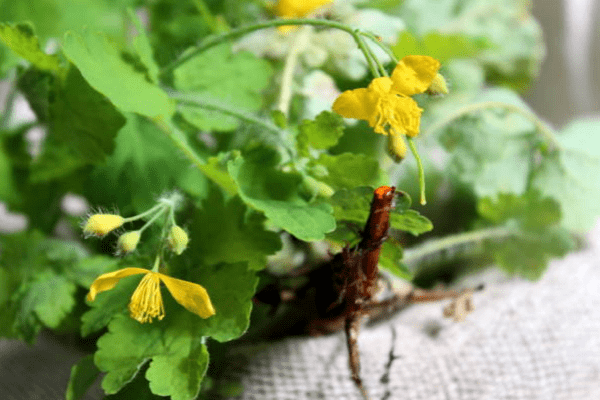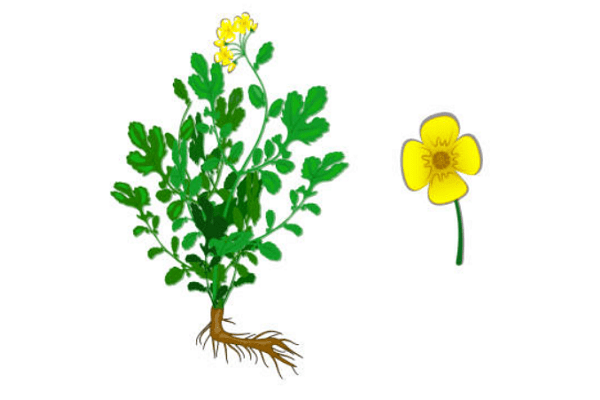Plants with a healing effect >>>> Celandine - useful properties
Celandine - useful properties.

Among the group of medicinal plants there are those that have earned the title of being medicinal for their harmful properties. Such plants include Greater celandine (Chelidonium majus L.). This plant contains extremely poisonous juice, which is classified as a substance for external medicinal use. The word "medicinal" is applied to Celandine solely for the result of the action of the juice on the skin, which in the most serious way burns the surface of the skin. But such a burn has a useful result - it burns out warts , papillomas and corns. In all other cases, the use of fresh plant juice causes severe burns up to the formation of blisters.

In addition to the fact that the Greater Celandine plant contains burning juice in the leaves and stems, it is rich in phytoncides and endowed with bactericidal properties, which are due to the juice in the roots and rhizomes of the plant. This juice contains a large amount of alkaloids and natural acids (chelidonic, malic, succinic, citric). The roots and rhizomes of celandine are harvested as raw materials for obtaining decoctions for external use. Roots and rhizomes for raw materials must be juicy (check on the cut). Raw celandine is washed, dried and stored for no more than three years.
From dry raw materials Celandine, if necessary, prepare decoctions of compresses and for taking baths. It is worth knowing that the degree of burning of Celandine juice obtained by digesting substances from dry raw materials can be compared with the use of Iodine solution. For this reason, the concentration in the decoction of the raw materials of Celandine is done in no more than a ratio of one to two. For baths, such a decoction is diluted two more times, and for compresses, a decoction is used without dilution.
Compresses from a decoction of Celandine are used to treat purulent surfaces, bactericidal treatment of wounds, and to treat the skin with a pustular rash.
Dry powder from ground celandine roots can be used on the basis of mustard plasters or pepper plaster. Such compresses have an irritating effect on limited areas of the skin, which is used in the medical business as a warming compress or as a distraction (for example, with skin itching). The powder from the ground roots of Celandine is diluted with water to the state of a thick slurry, smeared with a thin layer on a cloth or a special substrate for compresses.
Useful properties of Celandine classify the plant as a herbal remedy for external use, although in the old days it could be used as a diuretic and choleretic agent due to the fact that the plant juice in low concentrations in solutions irritates the mucous membrane of internal organs, causing the desired effects. But today, the juice of the plant is used only as a means of external use and in various concentrations for various purposes. It is forbidden to use the fresh juice of the celandine plant on its own for oral administration, even in a diluted form.

Read

Read



























